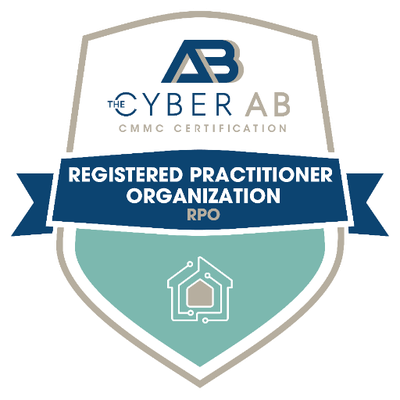Need to Meet CMMC Compliance?
Schedule Your CMMC Readiness Assessment
Fill out the form below to start the process
"*" indicates required fields
Learn More About CMMC and NIST Compliance
Check out some of our technology and DOD cybersecurity articles.
Contact us
About SSE
Contact Us
Interested in how SSE can optimize your business systems to ensure maximum availability and security? Contact our team today, and take a leap forward into the future of technology.
9666 Olive Blvd # 710,
St. Louis, MO 63132
info@sseinc.com | (314) 439-4700








Every business works with third parties, from vendors, suppliers, contractors and partners. They help companies throughout their day-to-day operations, providing cloud services, sensitive data storage, and more.
While these third parties are essential, they have potentially significant cybersecurity risks. When cybercriminals are on the hunt for client data and networks, they most often target the third-party providers – not the company itself – so you must work with third parties you trust and those serious about security.
Defining Third-Party Risk
Before choosing a third-party provider, you must understand how to evaluate third-party risk. Third-party risk is the likelihood that your company will experience an adverse event when choosing to outsource certain services or utilize software built by third parties for specific tasks. These adverse events may include data breaches, operational disruptions, and reputational damage. While outsourcing is often necessary, it’s risky as you do not have control over that entity’s business practices or processes.
Third-party risks can vary depending on the type of business they work with and the information they are tasked with. The six main areas of third-party risk include:
Understanding these potential third-party risks can help you choose the right vendor. You can ask the right questions, look for any potential security gaps, or know what to be wary of when researching if an entity will be a good fit for your company or if you should steer clear.
What is TPRM?
TPRM, or third-party risk management, is the practice in which you can better understand the risks they may pose to both your organization and the supply chain. Vendor risk management (VRM) programs can help identify, assess, and mitigate financial assets and data that could be caused by a third-party vendor within the supply chain. Because there are many roles that third parties fill, TPRM is used as an umbrella to cover VRM as well as Supplier Risk Management, IT vendor risk, anti-bribery/anti-corruption (ABAC) compliance, contract risk management, and more.
Why Should I Care About TPRM?
TPRM should be top-of-mind for any business looking to outsource anything, as it will keep your company safe and profitable and help protect your customers and clients. The truth of the matter is that supply chain disruption risks are increasing as more third-party vendors are spread out around the world. Your business is subject to disruptions caused by whatever may be happening within that part of the globe, whether it’s major flooding, a hurricane, an earthquake, or a labor dispute. A business continuity plan must be in place to prepare for an unpredictable event. Otherwise, your business can suffer from monetary loss and loss of customers to the competition.
Caring about TPRM means you ensure the third parties you work with comply with regulations, protect confidential information, avoid unethical practices, strengthen supply chain security, and effectively handle disruptions to help sustain high performance and levels of quality. Some key trends in business practices today are helping drive the focus on ensuring your company has robust third-party management:
Third-Party Risk Best Practices
Luckily, several third-party best practices can be incorporated into your onboarding processes to ensure your business stays protected and uninhibited. Read on to discover the steps to take for better TPRM.
Assess Your Risk and Conduct Due-Diligence Checks
To efficiently handle your third-party risk, you must assess your current risk landscape. Take inventory of all the third-party vendors your company does business with. Examples of third-party service providers can include, but are not limited to:
Keep in mind that individual departments or teams may be using third-party vendors that all teams might not be aware of. In this case, consult your Finance department to get a comprehensive list of all vendors your company pays invoices to.
To aid your research, use content from sources like Regulatory DataCorp (RDC), Dow Jones, D&B, and Regulatory DataCorp (RDC), which curate adverse media reports, sanction lists, Politically Exposed Persons (PEP), and other third-party data. Vetting your vendors against these resources is invaluable in identifying and flagging potentially high-risk third parties before they cause an issue.
Ideally, every third-party vendor should be vetted and go through due-diligence checks before a contract is signed.
Don’t Forget About Fourth-Party Vendors
It might feel like overkill, but it’s important to determine whether the vendors you’re engaging with are subcontracting their work to another company. These companies are Fourth-Party Vendors. Knowing whom your vendors rely on for goods or services is essential to maintain consistency and reliability in your supply chain.
Further, knowing if Fourth-Party vendors pose a risk to your company will prevent costly supply chain issues in the future.
Get Buy-in From Leadership
C-Suite and Upper Management’s buy-in for your company’s TPRM approach will set the tone for the diligence of the rest of the company to mitigate third-party risk. Making sure the powers-at-be are practicing these best practices, and enforcing them, will perpetuate a culture of good risk management.
Continuously Monitor Your Vendors
Simply performing third-party due diligence checks pre-contract or during onboarding is insufficient.
Once you’ve assessed your current risk landscape, maintaining a consistent monitoring schedule is imperative to stay informed and ahead of third-party vendor disasters.
Many companies will rely on data screening providers, such as an experienced Managed IT Service Provider (MSP) or a Cybersecurity provider.
It is also a best practice to reference the industry standards for third-party risk management. Referencing TPRM leaders, like those listed below, will be invaluable information to incorporate into your company’s TPRM process:
Cybersecurity Maturity Model Certification (CMMC 2.0)
NIST 800-171
Partner with Cybersecurity Experts to Catch Third-Party Risk Before It’s an Issue
Mitigating third-party risk can feel daunting, especially in our current economic landscape. SSE provides best-in-class cybersecurity and managed IT services, so your data stays protected, and your vendors are actively monitored.
Contact us today to schedule a consultation and learn more about how our expertise and services will protect your business and your supply chain!